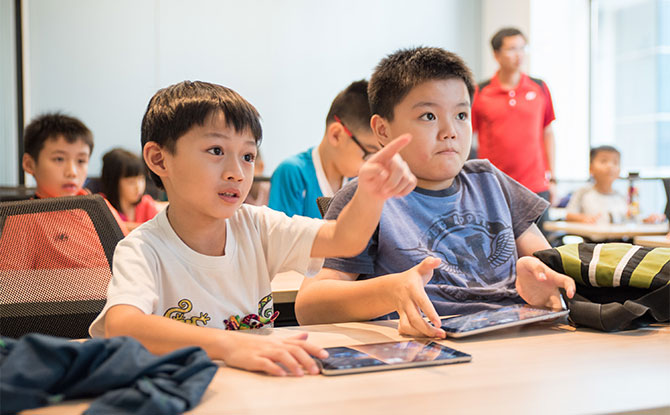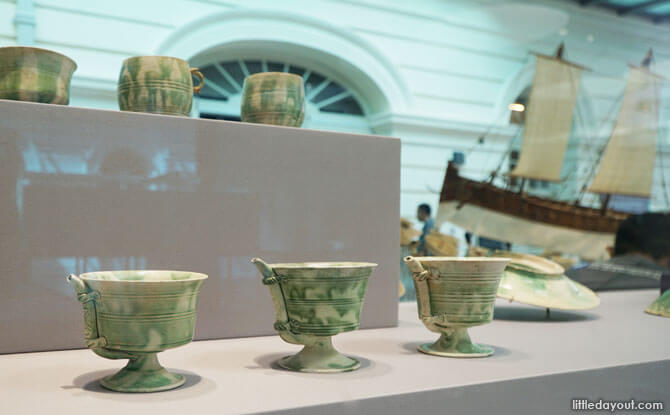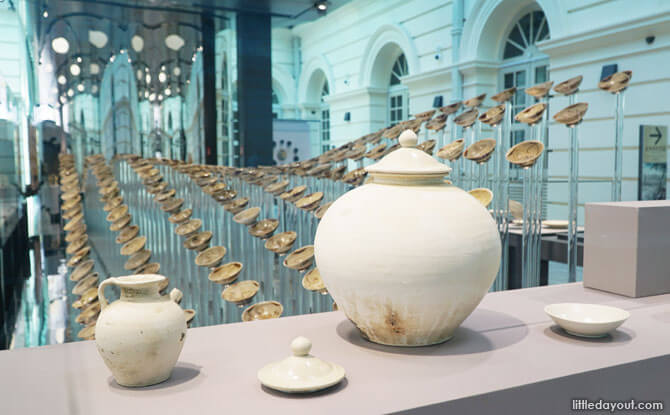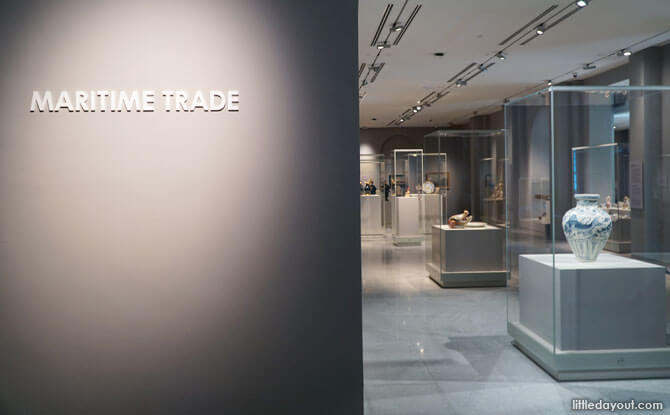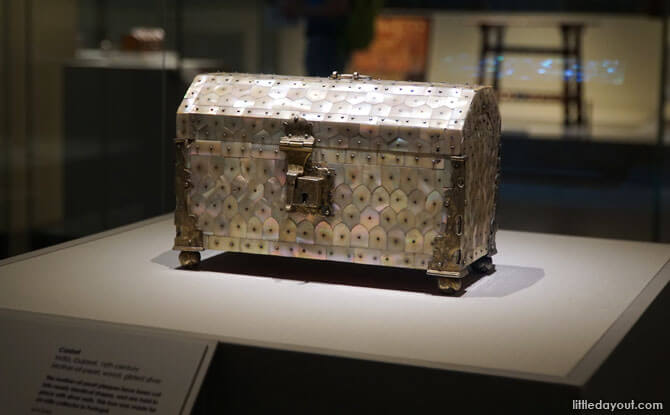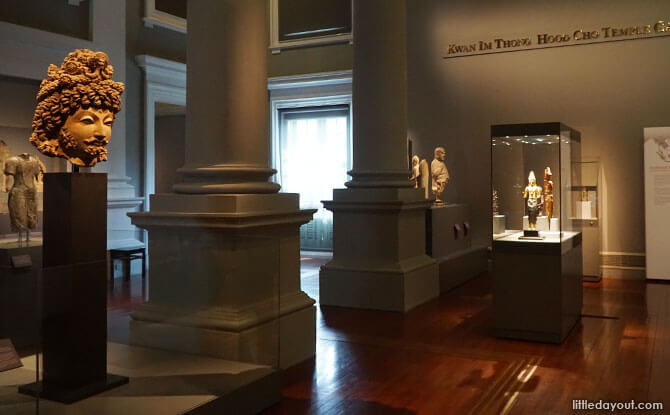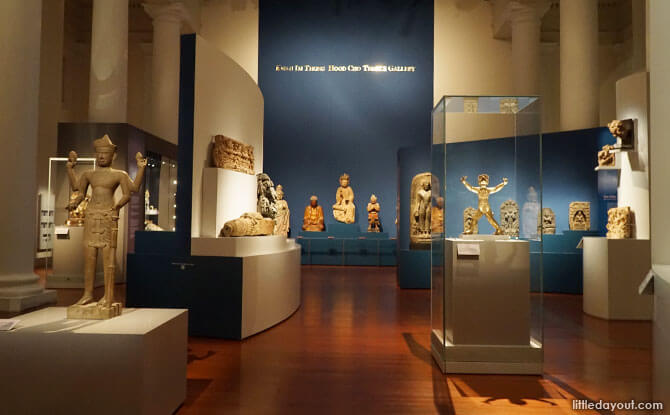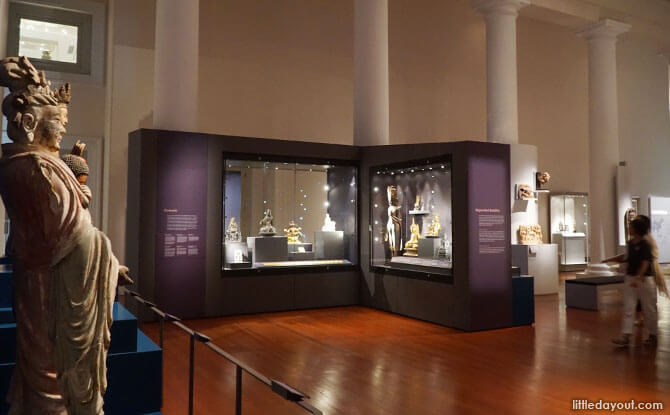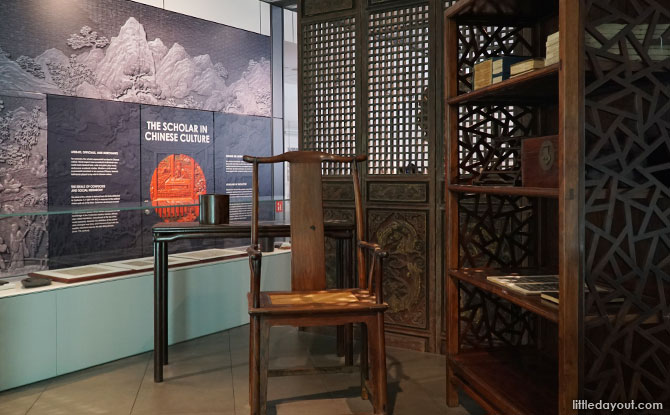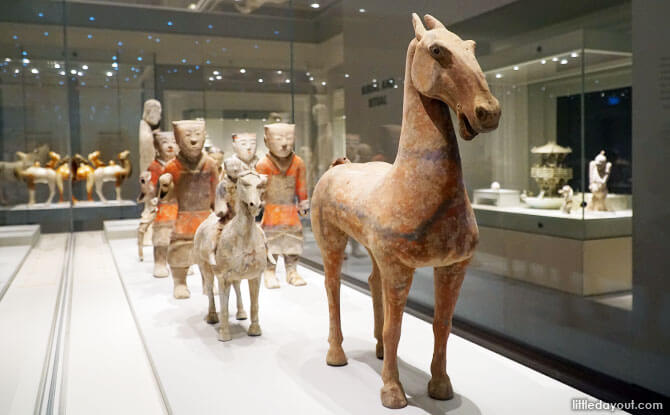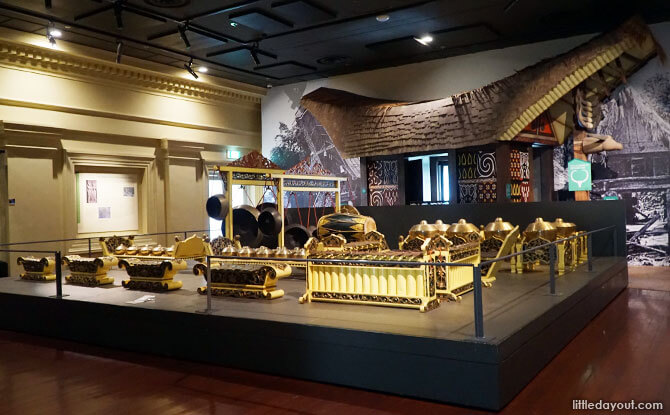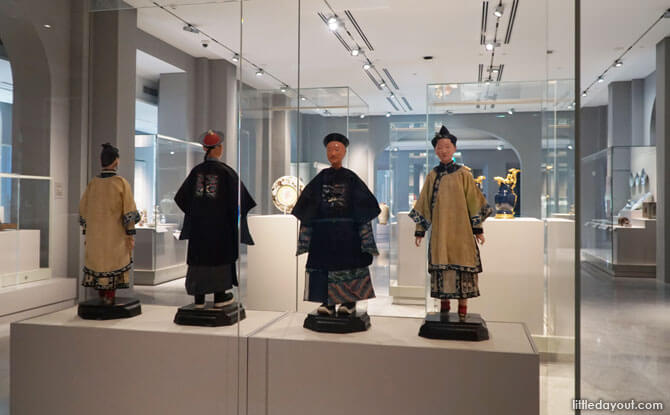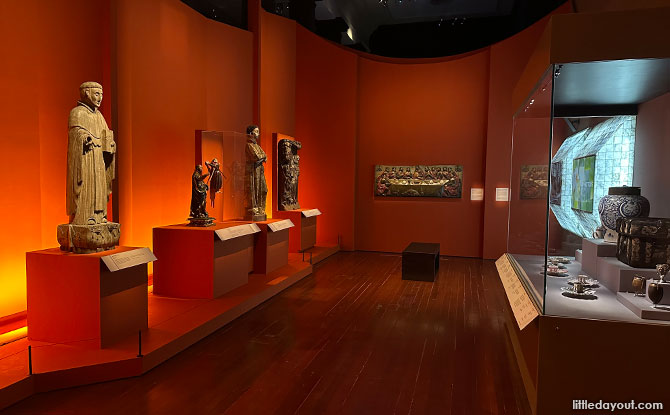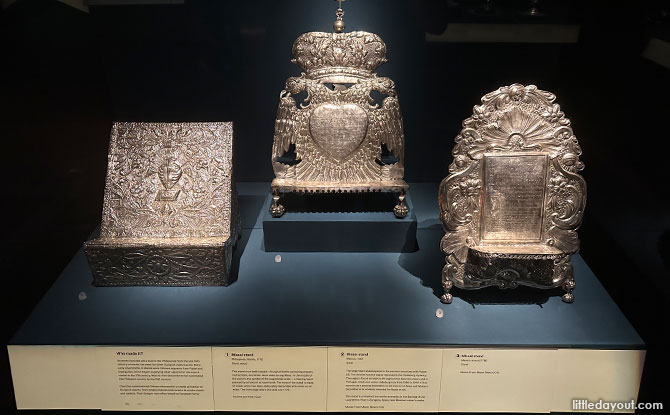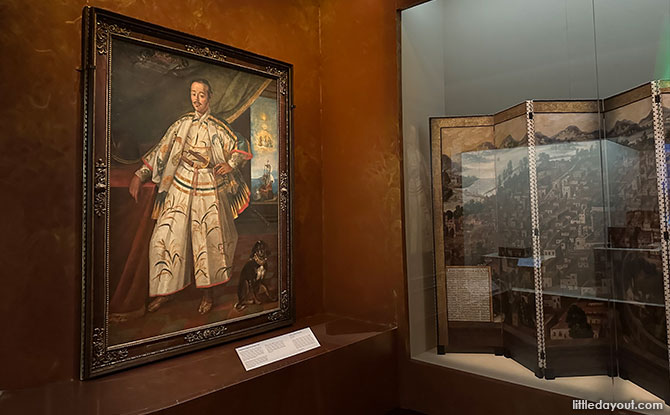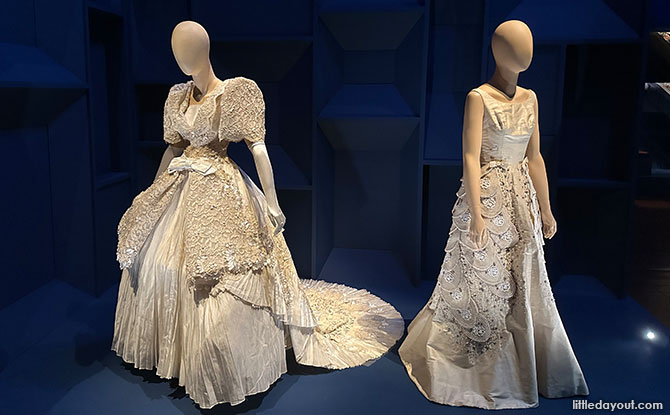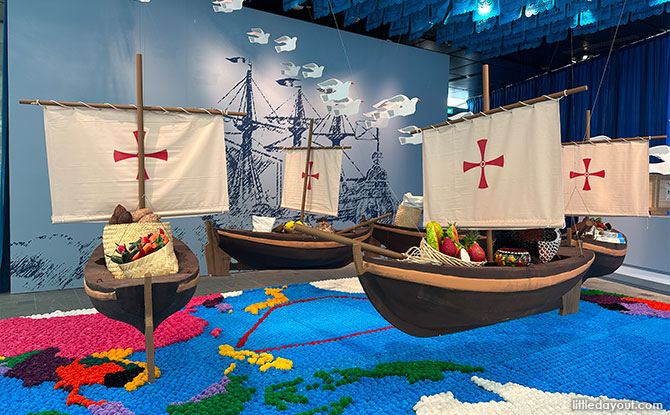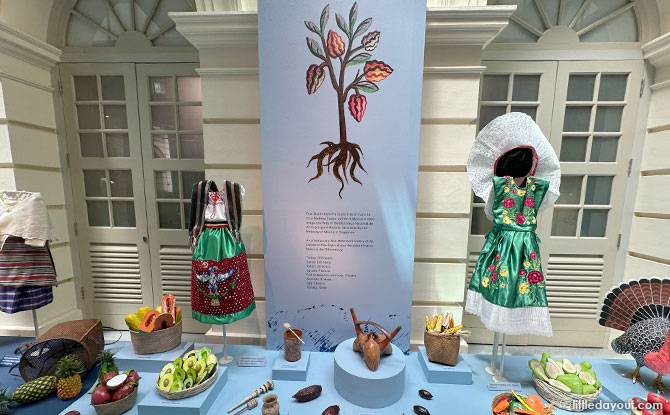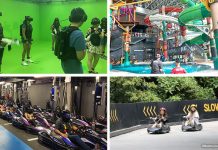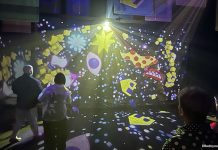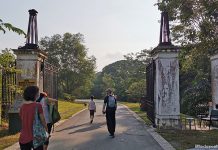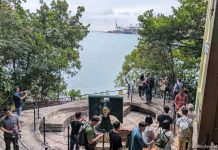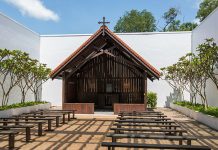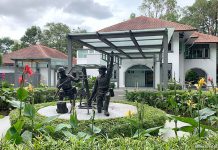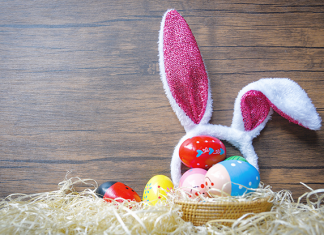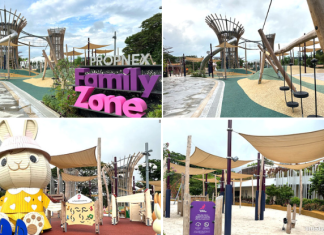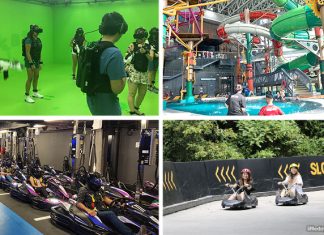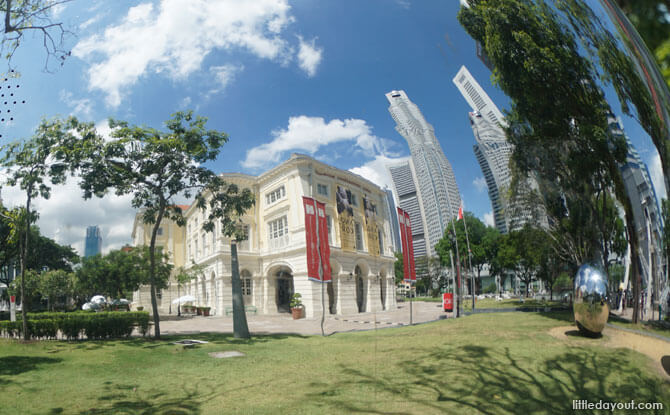
The Asian Civilisations Museum explores the cultures of Asia with a focus on the ancestral roots of the people of Singapore. The museum is housed in the former Empress Place building which was previously used as government offices.
Nowadays, instead of government officials, the rooms are filled with ancient artefacts from all across Asia.
Artefacts at the Asian Civilisations Museum are organised into galleries that cover various historical themes.
Step inside the Asian Civilisations Museum
Maritime Trade
The first floor of Asian Civilisations Museum focuses on the theme of trade.
FREE FOR LITTLE DAY OUT PARENTS: Sign Up for a Free Trial with ACT 3 Academy to Find Out If Drama Classes are Right for Your Child
3 Recycling Adventures: Fun Ideas For Kids & Families
1:1 & Small Group English Lessons: How to Get Personalised, English Help
A highlight here is the Tang Shipwreck exhibit. On display is the cargo recovered from a 9th Century shipwreck which was discovered off Belitung Island, about 600 km from Singapore.
The cargo from the shipwreck included ceramics and luxury items dating back to the Tang Dynasty that was bound for the Middle East.
Other exhibits on the first floor include goods – from ceramics to mother-of-pearl products.
There were making their way to countries around the region, including China, Indo-China and South Asia.
Ancient Religions
Asian Civilisations Museum’s second floor is devoted to ancient Asian religions.
It looks into the development of religions such as Buddhism, Hinduism and Jainism.
Among the displays are temple sculptures and reliefs from all around Asia.
Also on the second floor is a gallery which provides a window into the world of the Chinese scholar. The gallery expounds on the ideals associated with a Confucian scholar, the activities a “good” scholar was expected to pursue, ritualistic practices and more.
Ceramics and the Arts
Accessible only by the central staircase or a back lift, the third floor houses two smaller thematic galleries.
One of the galleries is devoted to Chinese ceramics and include pieces from the Ming dynasty.
The other third floor gallery is dedicated to the performing arts of the region.
Three Galleries on the Spread of Religion in Asia
There are also three galleries tell the story of the spread of religion in Asia and how art developed in response to different systems of belief.
Christian Art Gallery
This gallery at Asian Civilisations museum highlights artworks produced by Asian craftsmen from the 16th to the 19th century. Artefacts in the gallery reflect the cross-cultural artistic exchanges between Asia and Europe.
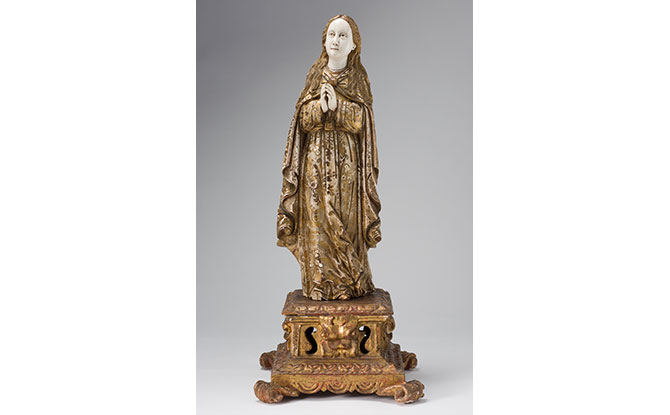
A highlight is a statue of the Virgin Mary. It has Asian features on the face of Virgin Mary and a tucked-in robe at the back known as a suksok, suggesting that it was made in the Philippines.
Islamic Art Gallery
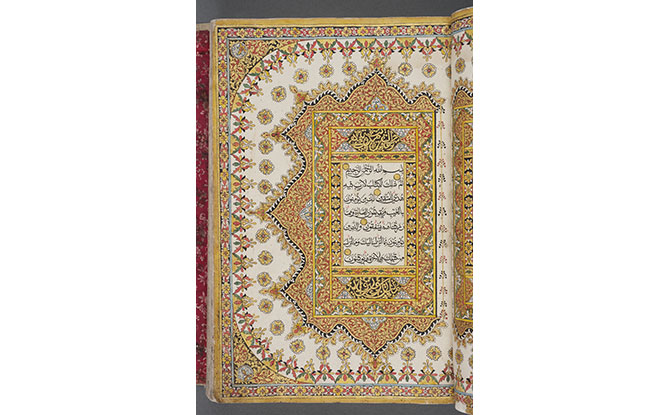
The Islamic Art Gallery explores the rich variety of Islamic art through secular, courtly and scientific objects that reflect Islamic values and sensibilities. Artefacts on display include a Quran made in Terengganu with 40 cm tall and 25 cm wide pages with exquisite decoration.
Ancestors and Rituals
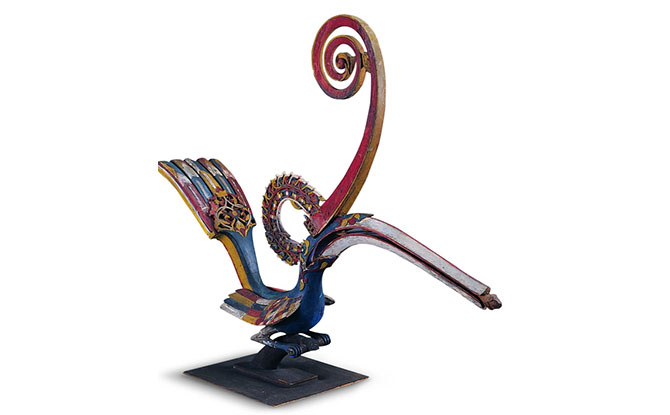
Casting the spotlight on Southeast Asian civilisations, the Ancestors and Rituals gallery focuses on traditions and rituals relating to food, fertility and family. Amongst the objects on display are those from the former Raffles Library and Museum.
Visiting the Asian Civilisations Museum
The museum regularly hosts changing exhibitions related to the subject of Asian cultures.
The Asian Civilisations Museum will appeal to visitors who are interested to learn more about Asian cultures, beliefs and practices.
As the exhibits and topics covered at the Asian Civilisations Museum can be quite heavy-going, one of the best ways to get the most of a visit to the museum is the join a tour where the guide is able to elucidate the significance of the various exhibits.
Asian Civilisations Museum
Where: 1 Empress Pl, Singapore 179555
Website: Asian Civilisations Museum
Past Exhibitions at Asian Civilisations Museum
Here’s a look at some of the past exhibitions that have been held at the Asian Civilisations Museum.
PAST EXHIBITION – Manila Galleon: From Asia To The Americas (Dec 2023 to 17 March 2024)
Manila Galleon: From Asia to the Americas at the Asian Civilisations Museum traces the historical trade links that connected Asia to the Americas and Europe.
This exhibition was spread out over three galleries at the Asian Civilisations Museum and features over 140 objects from the 16th to the 20th century. It also highlights how the movement of people, goods, and ideas between the Philippines and Mexico created a distinctive shared cultural and artistic heritage even though the two countries are so far apart.
The main gallery for Manila Galleon: From Asia to the Americas is located at the rear of the museum’s second floor.
Step inside to learn about the trade that flowed between the Americas and Asia between 1565 to 1815 when enormous ships called galleons sailed annually across the Pacific from Manila to Acapulco, carrying porcelain, silk, spices, and other goods.
The first section of the exhibition gallery looks at the origins of goods and ideas that can now be easily found in Southeast Asia, from natural produce such as chocolate to the introduction of the Christian faith.
Coins, chests, and other objects show how silver carried by the galleons became the first global currency.
Then take a look at how silver became the currency of trade with inflows from the Americas into Asia.
The exhibits include displays of maps, archaeological sherds, and chinaware. Export porcelain, portable furniture, paintings and textiles were just some of the objects that travelled between Asia, the Americas, and Europe.
Through the use of a large interactive screen, visitors can also try to imagine what life must have been like travelling on a galleon.
The last section of the special exhibition looks at how the galleon trade influenced artistic expression in fashion, textiles, and accessories well into the 19th century.
This is represented through fashion items that crossed the oceans, for example, embroidered silk shawls, known as mantónes de Manila (Manila shawls) which became popular in Spain.
The last gallery is on the ground floor.
Here, there is a contemporary art piece that invites visitors to reflect on the galleons facilitated the exchange of goods and ideas across the Pacific Ocean.
PAST EXHIBITION – Angkor: Exploring Cambodia’s Sacred City. Masterpieces of the Musée national des arts asiatiques-Guimet (8 April to 22 July 2018)
With more than 140 sculptures, watercolours, drawings and historic artefacts on display, the exhibition Angkor: Exploring Cambodia’s Sacred City. Masterpieces of the Musée national des arts asiatiques-Guimet will provide visitors a closer look at the Khmer civilisation and the world-famous UNESCO World Heritage site.
Explorers and Explorations
The first section of Angkor: Exploring Cambodia’s Sacred City at Asian Civilisations Museum will take visitors back to the 1800s when Angkor first gained prominence on the world stage.
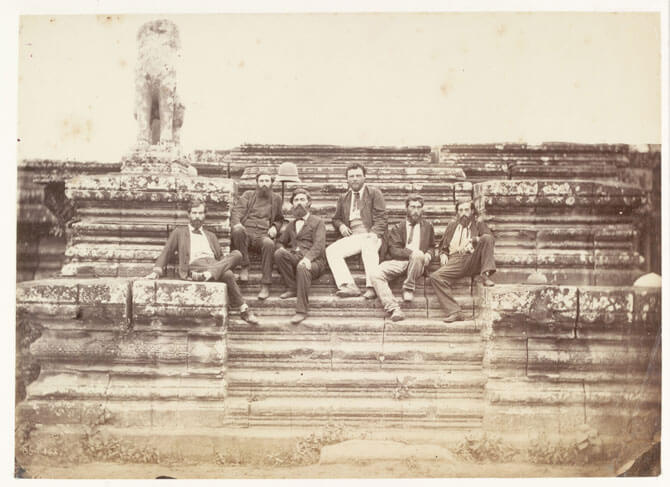
It was 1866 when members of the French Mekong Exploration Commission paid a visit to the temples of Angkor. A historical print on display shows the members of the Commision on the steps of Angkor Wat.
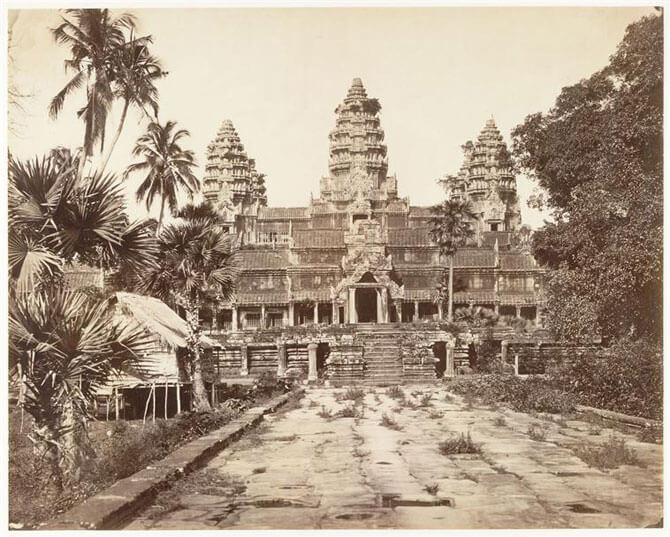
Émile Gsell, the French photographer who took the print, helped capture the state and condition of Angkor in the 1860s. His photographs are amongst the earliest ever taken of Angkor and are on display at the Asian Civilisations Museum.
A member of the Mekong Exploration Commission, young naval officer Louis Delaporte, was particularly enraptured by Angkor. With his talent in art, he produced sketches and drawings that helped to popularised Angkor in the West. He subsequently went on to promote and evangelise the importance of Khmer art and culture.
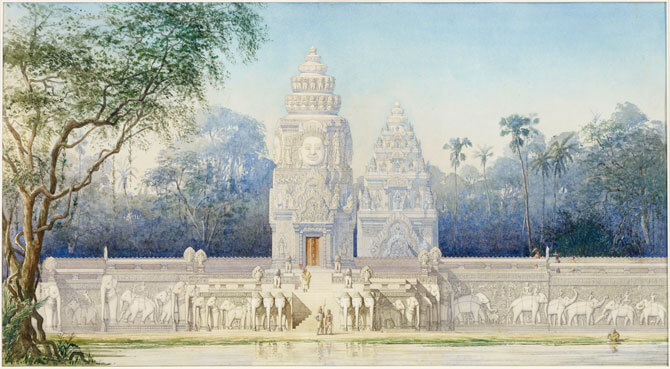
Today, his watercolour paintings, and those of fellow artists such as Lucien Fournereau, provide a fascinating historical record of Angkor in the late 1800s.
These historic photographs and paintings, along with other artefacts such as architectural drawings and rubbings by early French explorers, make up the first section of Angkor: Exploring Cambodia’s Sacred City at Asian Civilisations Museum.
Khmer Art and Artistry
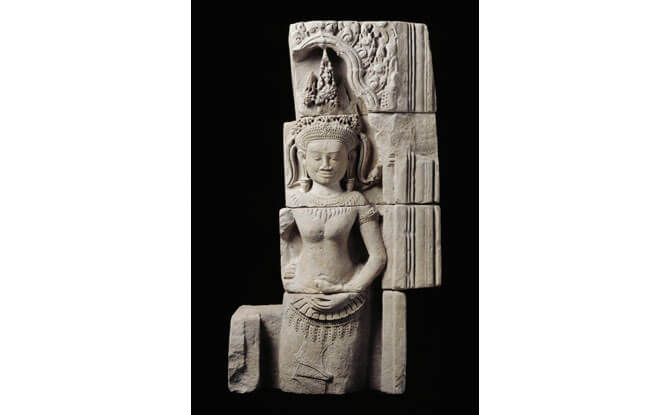
On display at the second section of the exhibition are more than 50 sculptures from the Guimet Museum that chronical the development of Khmer art.
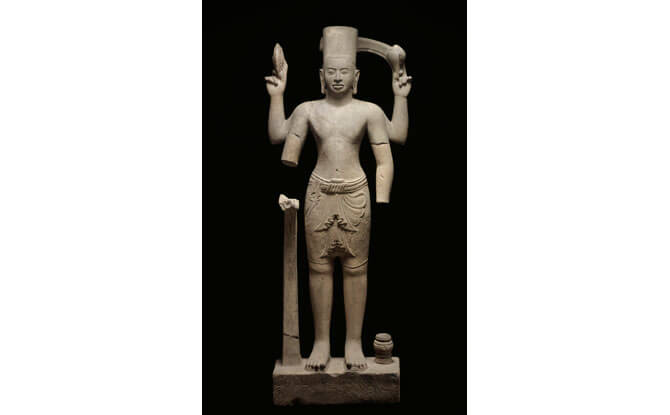
These sculptures not only showcase the stone-working skills of Khmer craftsmen but also illuminate the role of Hinduism and Buddhism in the city of Angkor.




